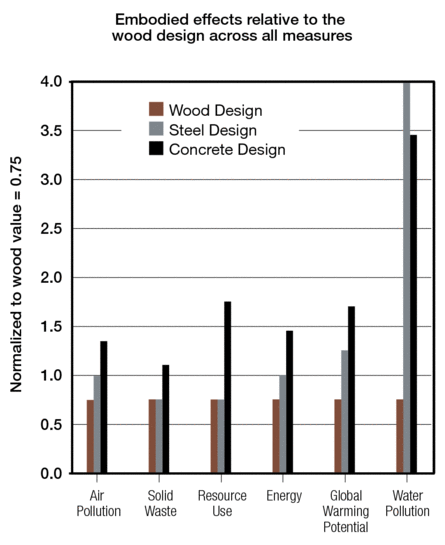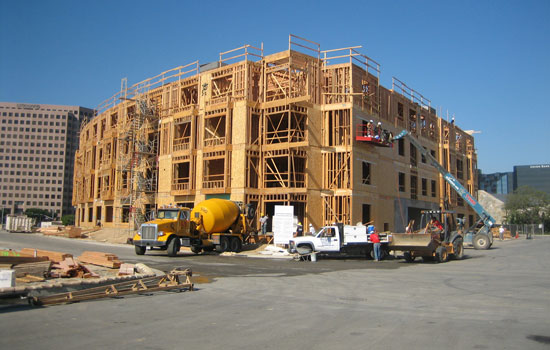Materials Matter
Life Cycle Assessment: A Scientific Way to Calculate Environmental Impacts
One approach to determining the environmental impacts of various building materials is life cycle assessment (LCA), an internationally recognized decision-making tool that acknowledges the fact that all phases of a product's life, from cradle to grave, have a quantifiable impact on the environment. Based on standards by the International Organization for Standardization (ISO), which rely on science rather than assumptions, LCA assesses those impacts from the time materials are extracted through manufacture, transportation, storage, use, recovery, reuse and disposal. LCA, which can be done at the product level, assembly level, or whole building level, is gaining widespread acceptance as an impartial way to compare materials based on their true environmental impacts, including global warming potential.
 |
Source www.naturallywood.com |
"There's been a tendency to look for simple answers to very complex questions. There is no perfect material, so we need to understand tradeoffs in terms of real environmental effects," says Wayne Trusty, Past-president of the Athena Institute, a non-profit organization that seeks to improve the sustainability of the built environment by meeting the building community's need for better information and tools. "For example, one overly simplistic answer is that, by definition, something that is agricultural or grown rapidly is better for the environment. But if we don't consider the fertilizer, pesticides, and water that's used, and the energy required to grow, process, and move these products, then we're only getting a little piece of the answer."
Trusty says it's critical to move toward answers that truly reflect environmental effects. "Life cycle assessment gets us to take as holistic a view of these products as we possibly can, and understand the full set of impacts," he says. "Sometimes the rapidly renewable product is going to come out looking OK, but lots of times it won't. Often it will turn out that a longer-rotation wood product or a different material altogether is going to come out looking good. But we have to take everything into account."
LCA studies consistently demonstrate wood's environmental advantages over steel and concrete.2 For example, the Consortium for Research on Renewable Industrial Materials (CORRIM) conducted two landmark studies on the life cycle environmental impacts of wood vs. alternative materials. Phase I examined the impacts of comparable wood vs. concrete homes in Atlanta and wood vs. steel-frame homes in Minneapolis (the materials most common in each city). In both comparisons, wood was shown to be better for the environment in terms of embodied energy, air and water pollution, and global warming potential. Phase II of this research placed an increased emphasis on carbon footprint. Recognition that the carbon stored in wood products offsets many of the emissions from other products substantially alters the comparisons. Despite the small total mass difference resulting from substituting steel or concrete framing for wood, the Global Warming Potential (GWP given in CO2 equivalent of greenhouse gas emissions of CO2, methane and nitrous oxide) from the steel-framed house is 26 percent greater than the house with wood walls and floors, without considering the carbon stored in wood products. This becomes a 120 percent difference when the carbon stored in the wood products for the life of the house is included. Emissions from the completed, concrete wall-framed house are 31 percent greater than the wood wall house without considering the carbon stored in wood products, and 156 percent greater when these carbon stores are included in the calculation.3
Embodied Effects of Three Homes
 |
Source: Data compiled by the Canadian Wood Council using the ATHENA EcoCalculator for Assemblies with a data set for Toronto, Canada |
Because calculating life cycle impacts is complex and time consuming, tools exist to help architects judge the environmental merits of various materials. Online resources like the ATHENA® Impact Estimator for Buildings, and carbon calculators from US WoodWorks and Build Carbon Neutral are giving architects additional ways to assess the sustainability of their building designs. These new tools provide valuable insights that can help architects make informed decisions about the materials they choose.
 |
Given that the U.S. commercial building stock grows by about 1.6 billion square feet every year, wood's low embodied energy is a significant advantage. Photo courtesy of VanDorpe Chou Associates |









